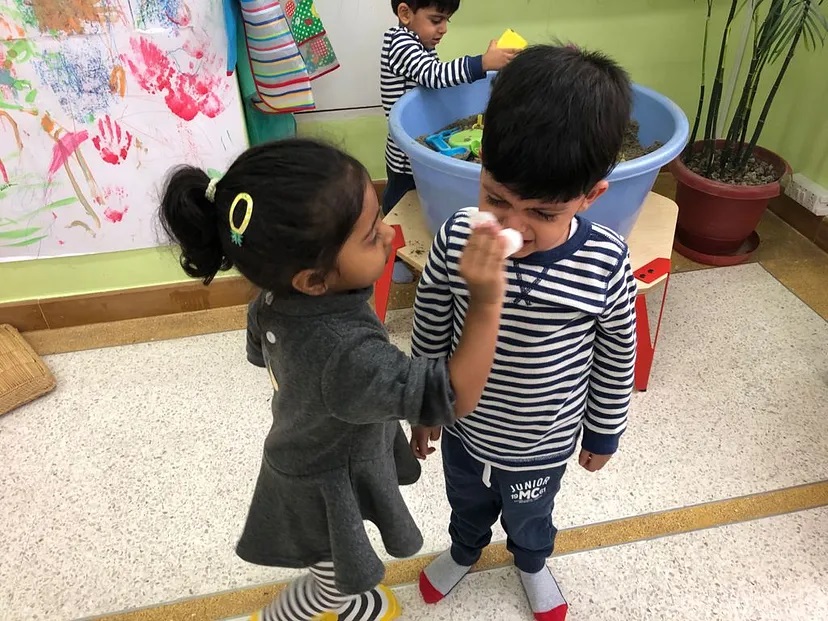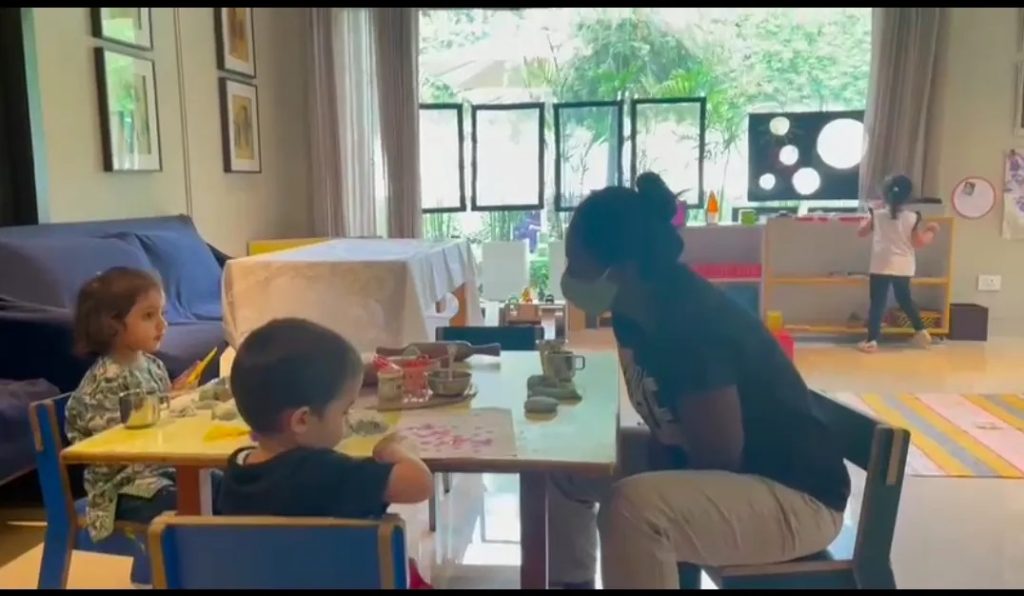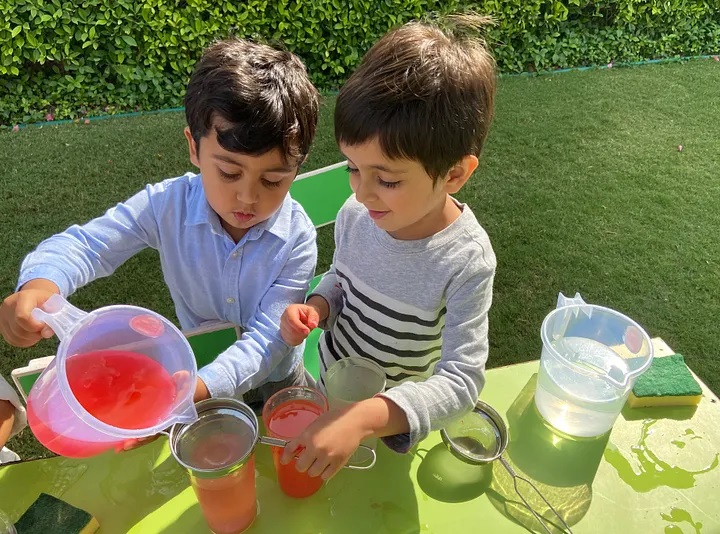Blog / How to manage tantrums in children- Learning Matters
How to manage tantrums in children- Learning Matters
Published July 27, 2024 |
Being a parent or teacher, managing a child’s tantrums can often be difficult, be it around not eating vegetables, refusing to comply with routines, demanding an object or toy or simply speaking rudely.
At times, children’s tantrums may seem entirely unwarranted and yet they cannot be really blamed for them.
Explaining this instantaneous transition, Ray Levy,a clinical psychologist and co-author of Try and Make Me! Simple Strategies That Turn Off the Tantrums and Create Cooperation, says,
“Young kids — namely those between the ages of 1 and 4 — haven’t developed good coping skills yet. They tend to just lose it instead.”
While there’s no perfect way for parents to effectively interact with the child during their tantrums or emotional outbursts, often, parents choose either of the two poor strategies to cope with the situation – losing their temper or caving into the child’s requests.
So, here are some thoughtful tips for parents to elucidate a constructive and holistic response to their child’s emotional outburst, whenever it may happen next.
Understand that tantrums are normal in young children:
The majority of toddlers start using tantrums as a mode of communication between the ages of 1–4 when they are still developing language and motor skills.
According to Dr Michael Potegal, a psychologist and associate professor at the University of Minnesota who researches tantrums,
“Roughly 85 per cent of 2- and 3-year-olds have tantrums.”
Due to a lack of effective communication, it often becomes frustrating for the child to be not able to convey their needs, or feelings properly, which results in temper tantrums.
Allow the tantrums to settle:

Your child’s tantrums might be mentally daunting but maintaining your calm in the process is very important for you to be able to constructively support your child.
Dr Rebecca Schrag Hershberg, a clinical psychologist and author of The Tantrum Survival Guide, says,
A parent should be the thermostat, not the thermometer. Your goal is to reset the temperature.”
When the tantrum starts, try sitting it out until it settles while making sure you are there for your child physically and emotionally.
For example – If your child refuses to eat vegetables on the breakfast table, you can choose to not participate in the discussion but cater to their other requests like packing their bags or helping them clean their dishes.
Ensure their safety:
In case your child throws tantrums in a public space or risks harming themselves while doing so, it’s very important to move them out of that space.
If they are holding something sharp, try talking them into giving it to you like, “I understand you are upset, but this can hurt you more so, can you please give this to me, and we’ll have cookies together. Okay?”
If your child is back-talking or hurting you physically (throwing things or kicking), ensure that you are calm and not acting out on your child’s tantrums as Janet Lansbury says,
“The child back-talks because it works. So, deactivate this button so the behaviour loses its power.”
If your child refuses to calm down, allocate a safe space where they can go to calm down.
Usually, such a place is a soft, tucked away space with soft cushions. This can be “their” space to go to in order to calm down and reconnect with their emotions.
Bring in a Distraction:

Bringing in a distraction in the space like the child’s favourite book, soft toy or moving to a different setting helps them deflect from the tantrum mood.
This method works best for younger kids who, are able to easily switch from one mood to another due to shorter attention spans.
For instance, if you are in a shop, and the child pushes for a new toy, you can enthusiastically switch gears by saying, “Hey, have a look at these pretty colour boxes. Do you want to take one home?”
When the tantrum stops, try initiating conversations with your child about their feelings, how you felt and invite them to co-create solutions for minimising the outbursts for the future.
Comfort your child:
Throwing tantrums could also be a way for your child to express/vent their emotions, particularly frustration and anger.
If the child is feeling overwhelmed, comfort your child with a hug or any other expression of your love and affection.
This will act as a reassurance that you care for them, and you are there to help them till they are able to regulate their emotions.
In case, the child is resisting physical touch, wait for their emotions to clear up instead of pushing it.
Acknowledging your child’s emotions can be another way of giving them the comfort they are seeking from you.
For example — if your child is upset about not being able to watch their favourite cartoon, acknowledging it may sound like, “I know it’s very upsetting when you cannot watch your favourite cartoon but would you like to play some fun games with me?”
For an older child, you can also suggest some self-calming activities like deep breathing or gentle music to help them settle down whilst they are throwing tantrums, and understand their emotions.
Help them process emotions:

While growing up, often a child uses tantrums as a way to communicate their needs or their emotions — anger, frustration, sadness — due to a lack of sense of control.
Helping your child learn to label their emotions could be the first step in calming them down.
Give words to them to express themselves like, “I see you are upset because your toy is broken.”
The second step could be reassuring them that you understand their needs and are willing to give them autonomy with some decisions.
For instance, if you are going to shop clothes with your child, you can tell them, “I know you love choosing your own clothes, would you help pick between the red one or the green one?”
However, with matters regarding your child’s safety, you can have a firm approach, but share the reason and offer an alternative like,
“I understand it’s fun to climb ladders, but this one is for when you are older. Instead, would you like to come to see-saw with me?”
You can also support your child in growing a hobby – gardening, music, painting etc. that could give them a sense of achievement while being a therapeutic indulgence for when they feel overwhelmed.
Conclusion:
Tantrums and emotional outbursts by children are completely normal and shouldn’t be taken personally as a reflection on your parenting.
Parents and teachers should remember that it’s them who need to act maturely in the situation since the child is still growing. Further, losing your temper, as a parent or educator, is never an option.
Try being as calm as you can with your child through this phase as they grow up and learn to improve their coping and communication skills. The outbursts will tend to fade away as they are able to better manage their emotional regulation.






